Fashion of last years MM en’sstyle


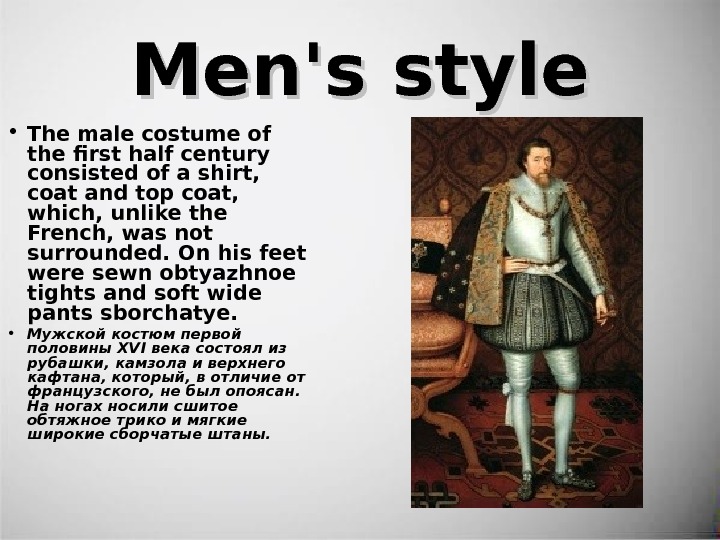
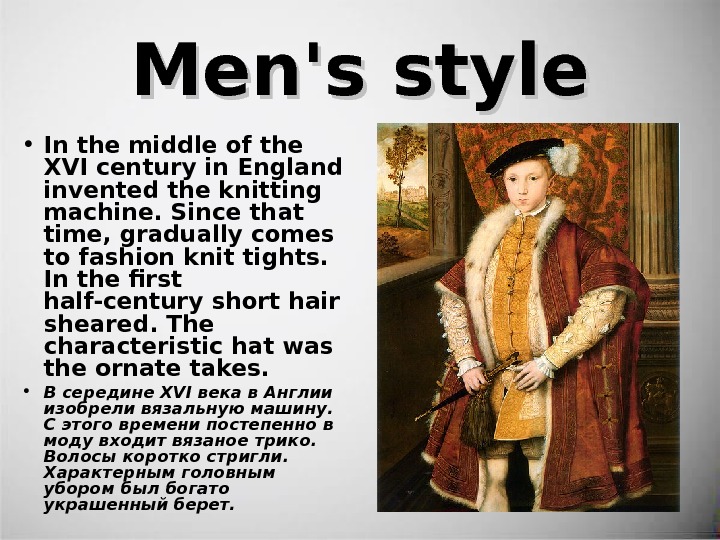
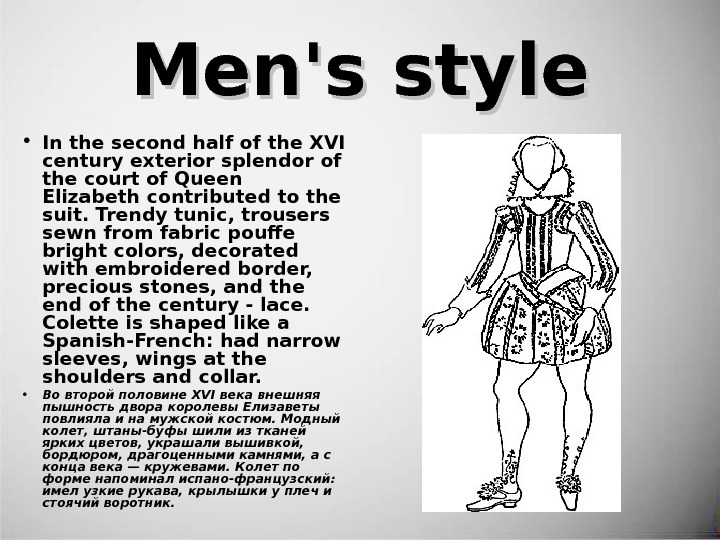
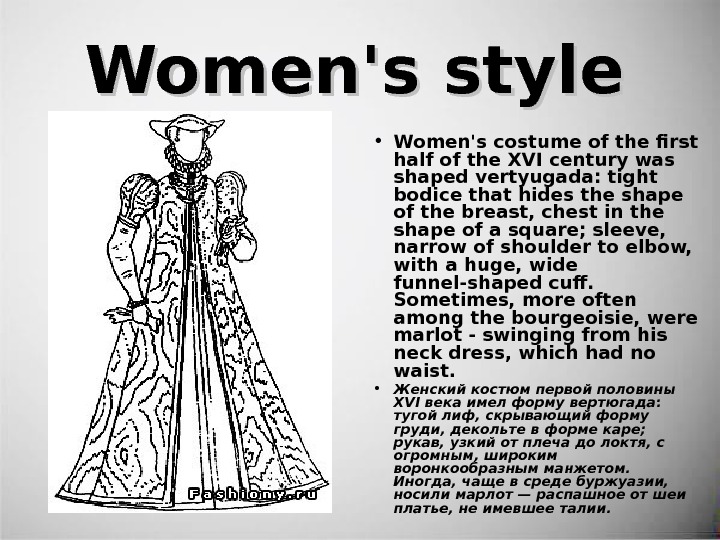
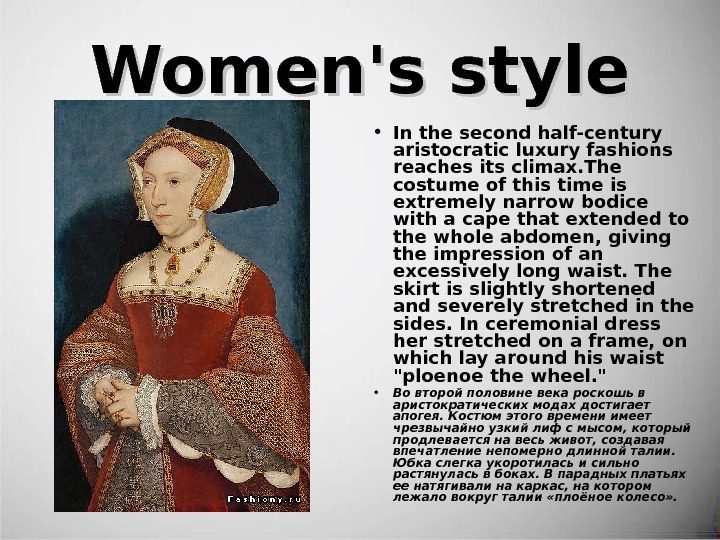
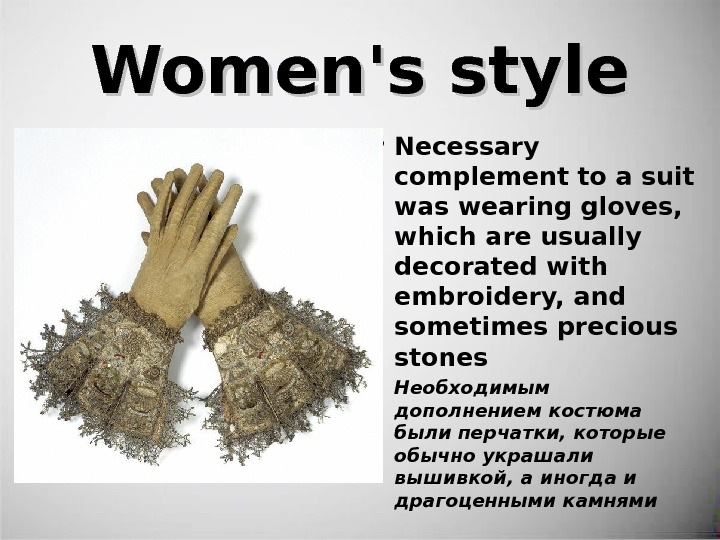
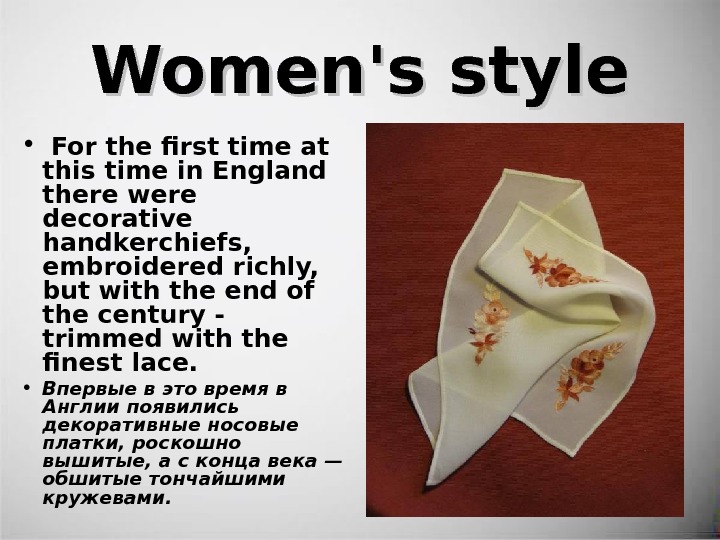
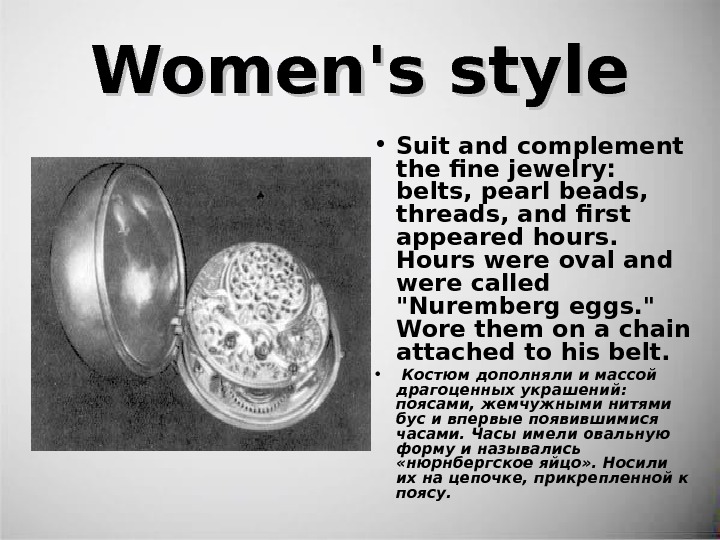
- Размер: 531.5 Кб
- Количество слайдов: 9
Описание презентации Fashion of last years MM en’sstyle по слайдам
 Fashion of last years
Fashion of last years
 MM en’sstyle • The male costume of the first half century consisted of a shirt, coat and top coat, which, unlike the French, was not surrounded. On his feet were sewn obtyazhnoe tights and soft wide pants sborchatye. • Мужской костюм первой половины XVI века состоял из рубашки, камзола и верхнего кафтана, который, в отличие от французского, не был опоясан. На ногах носили сшитое обтяжное трико и мягкие широкие сборчатые штаны.
MM en’sstyle • The male costume of the first half century consisted of a shirt, coat and top coat, which, unlike the French, was not surrounded. On his feet were sewn obtyazhnoe tights and soft wide pants sborchatye. • Мужской костюм первой половины XVI века состоял из рубашки, камзола и верхнего кафтана, который, в отличие от французского, не был опоясан. На ногах носили сшитое обтяжное трико и мягкие широкие сборчатые штаны.
 MM en’sstyle • In the middle of the XVI century in England invented the knitting machine. Since that time, gradually comes to fashion knit tights. In the first half-century short hair sheared. The characteristic hat was the ornate takes. • В середине XVI века в Англии изобрели вязальную машину. С этого времени постепенно в моду входит вязаное трико. В о лосы коротко стригли. Характерным головным убором был богато украшенный берет.
MM en’sstyle • In the middle of the XVI century in England invented the knitting machine. Since that time, gradually comes to fashion knit tights. In the first half-century short hair sheared. The characteristic hat was the ornate takes. • В середине XVI века в Англии изобрели вязальную машину. С этого времени постепенно в моду входит вязаное трико. В о лосы коротко стригли. Характерным головным убором был богато украшенный берет.
 MM en’sstyle • In the second half of the XVI century exterior splendor of the court of Queen Elizabeth contributed to the suit. Trendy tunic, trousers sewn from fabric pouffe bright colors, decorated with embroidered border, precious stones, and the end of the century — lace. Colette is shaped like a Spanish-French: had narrow sleeves, wings at the shoulders and collar. • Во второй половине XVI века внешняя пышность двора королевы Елизаветы повлияла и на мужской костюм. Модный колет, штаны-буфы шили из тканей ярких цветов, украшали вышивкой, бордюром, драгоценными камнями, а с конца века — кружевами. Колет по форме напоминал испано-французский: имел узкие рукава, крылышки у плеч и стоячий воротник.
MM en’sstyle • In the second half of the XVI century exterior splendor of the court of Queen Elizabeth contributed to the suit. Trendy tunic, trousers sewn from fabric pouffe bright colors, decorated with embroidered border, precious stones, and the end of the century — lace. Colette is shaped like a Spanish-French: had narrow sleeves, wings at the shoulders and collar. • Во второй половине XVI века внешняя пышность двора королевы Елизаветы повлияла и на мужской костюм. Модный колет, штаны-буфы шили из тканей ярких цветов, украшали вышивкой, бордюром, драгоценными камнями, а с конца века — кружевами. Колет по форме напоминал испано-французский: имел узкие рукава, крылышки у плеч и стоячий воротник.
 Women’s style • Women’s costume of the first half of the XVI century was shaped vertyugada: tight bodice that hides the shape of the breast, chest in the shape of a square; sleeve, narrow of shoulder to elbow, with a huge, wide funnel-shaped cuff. Sometimes, more often among the bourgeoisie, were marlot — swinging from his neck dress, which had no waist. • Женский костюм первой половины XVI века имел форму вертюгада: тугой лиф, скрывающий форму груди, декольте в форме каре; рукав, узкий от плеча до локтя, с огромным, широким воронкообразным манжетом. Иногда, чаще в среде буржуазии, носили марлот — распашное от шеи платье, не имевшее талии.
Women’s style • Women’s costume of the first half of the XVI century was shaped vertyugada: tight bodice that hides the shape of the breast, chest in the shape of a square; sleeve, narrow of shoulder to elbow, with a huge, wide funnel-shaped cuff. Sometimes, more often among the bourgeoisie, were marlot — swinging from his neck dress, which had no waist. • Женский костюм первой половины XVI века имел форму вертюгада: тугой лиф, скрывающий форму груди, декольте в форме каре; рукав, узкий от плеча до локтя, с огромным, широким воронкообразным манжетом. Иногда, чаще в среде буржуазии, носили марлот — распашное от шеи платье, не имевшее талии.
 Women’s style • In the second half-century aristocratic luxury fashions reaches its climax. The costume of this time is extremely narrow bodice with a cape that extended to the whole abdomen, giving the impression of an excessively long waist. The skirt is slightly shortened and severely stretched in the sides. In ceremonial dress her stretched on a frame, on which lay around his waist «ploenoe the wheel. » • Во второй половине века роскошь в аристократических модах достигает апогея. Костюм этого времени имеет чрезвычайно узкий лиф с мысом, который продлевается на весь живот, создавая впечатление непомерно длинной талии. Юбка слегка укоротилась и сильно растянулась в боках. В парадных платьях ее натягивали на каркас, на котором лежало вокруг талии «плоёное колесо» .
Women’s style • In the second half-century aristocratic luxury fashions reaches its climax. The costume of this time is extremely narrow bodice with a cape that extended to the whole abdomen, giving the impression of an excessively long waist. The skirt is slightly shortened and severely stretched in the sides. In ceremonial dress her stretched on a frame, on which lay around his waist «ploenoe the wheel. » • Во второй половине века роскошь в аристократических модах достигает апогея. Костюм этого времени имеет чрезвычайно узкий лиф с мысом, который продлевается на весь живот, создавая впечатление непомерно длинной талии. Юбка слегка укоротилась и сильно растянулась в боках. В парадных платьях ее натягивали на каркас, на котором лежало вокруг талии «плоёное колесо» .
 Women’s style • Necessary complement to a suit was wearing gloves, which are usually decorated with embroidery, and sometimes precious stones • Необходимым дополнением костюма были перчатки, которые обычно украшали вышивкой, а иногда и драгоценными камнями
Women’s style • Necessary complement to a suit was wearing gloves, which are usually decorated with embroidery, and sometimes precious stones • Необходимым дополнением костюма были перчатки, которые обычно украшали вышивкой, а иногда и драгоценными камнями
 Women’s style • For the first time at this time in England there were decorative handkerchiefs, embroidered richly, but with the end of the century — trimmed with the finest lace. • Впервые в это время в Англии появились декоративные носовые платки, роскошно вышитые, а с конца века — обшитые тончайшими кружевами.
Women’s style • For the first time at this time in England there were decorative handkerchiefs, embroidered richly, but with the end of the century — trimmed with the finest lace. • Впервые в это время в Англии появились декоративные носовые платки, роскошно вышитые, а с конца века — обшитые тончайшими кружевами.
 Women’s style • Suit and complement the fine jewelry: belts, pearl beads, threads, and first appeared hours. Hours were oval and were called «Nuremberg eggs. » Wore them on a chain attached to his belt. • Костюм дополняли и массой драгоценных украшений: поясами, жемчужными нитями бус и впервые появившимися часами. Часы имели овальную форму и назывались «нюрнбергское яйцо» . Носили их на цепочке, прикрепленной к поясу.
Women’s style • Suit and complement the fine jewelry: belts, pearl beads, threads, and first appeared hours. Hours were oval and were called «Nuremberg eggs. » Wore them on a chain attached to his belt. • Костюм дополняли и массой драгоценных украшений: поясами, жемчужными нитями бус и впервые появившимися часами. Часы имели овальную форму и назывались «нюрнбергское яйцо» . Носили их на цепочке, прикрепленной к поясу.

